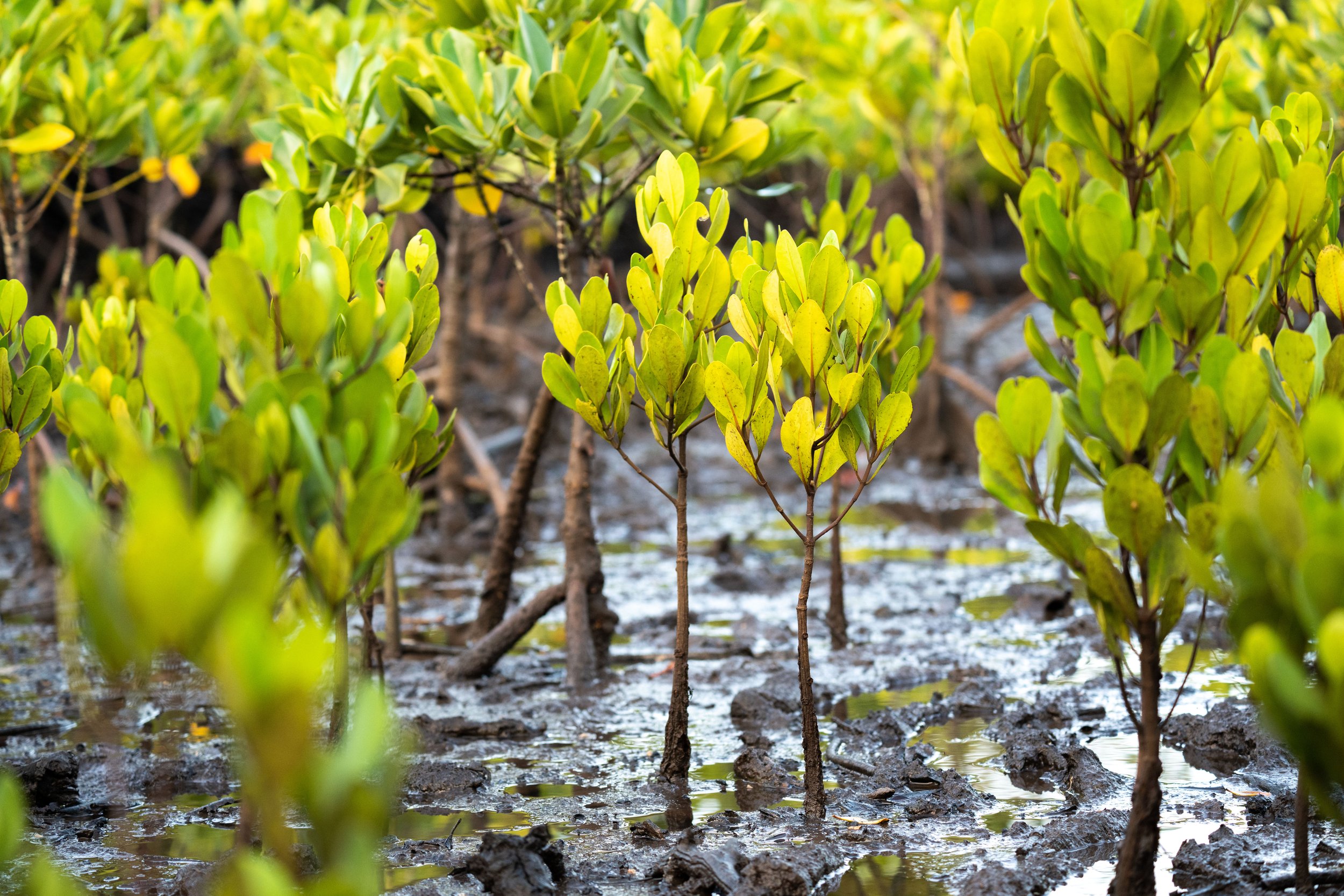NRT Coast Women: Saving the World from Climate Change, One Mangrove at a Time
The perfect time to experience all the delights the Lamu archipelago has to offer is low tide.
From swimming in turquoise blue waters to soaking in the warm rays of a beautiful sun while lounging on the beach, to enjoying the spectacular panoramic view of the Indian Ocean, low tide is your cue to step outside and engage in a variety of leisure activities.
For 35-year-old Zulfa Hassan, a local mangrove expert, low tide is synonymous with call time for work. Her moniker, ‘Mama Mikoko’ (Mother of Mangroves), is befitting as when the tide is low, she assembles her team of 50 women from Mtangawanda Village in Pate Marine Community Conservancy (PMCC) and begins the day’s task of planting mangroves.
For years, these women watched helplessly as the unrestrained logging of mangrove trees decimated fishing, their primary source of income. Both fish and crabs give birth in waters filled with mangroves, and the felling of the trees also destroyed their habitats.
Beyond Lamu, globally, thousands of acres of mangroves have been lost as the trees are felled for farming or to provide timber and charcoal, threatening fishers’ livelihoods.
While Lamu is still the most densely forested stretch of Kenya’s coastal shore, making up 59% of the 61,000 hectares of mangrove ecosystem, roughly 40% of mangrove areas are degraded.
In 2018, the women unanimously agreed to stop the destruction of mangroves, which are salt-tolerant trees, and voluntarily plant and protect them. To reverse the adverse effects climate change and deforestation had had on mangroves while simultaneously enhancing their livelihoods, the women started planting mangrove trees every year during the March-July and September-November seasons.
Mangrove forests provide critical habitats for marine life, contribute significantly to biodiversity conservation, filter pollutants, stabilize the coastline ecosystem, and prevent erosion. Since the women started restoring mangroves, fish and crab populations have increased in the area.
NRT, with the support of partners, including the Kenya Forest Service (KFS), The Nature Conservancy (TNC), Kenya Marine and Fisheries Research Institute (KEMFRI), and the Lamu County Government, trained the women on various aspects of mangrove restoration, paving the way for the Mangrove Restoration Program to thrive in three NRT Coast conservancies: PMCC, Kiunga Community Wildlife Association (KICOWA), and Lower Tana Delta.
"We did not know there were nine different mangrove species and that they grew in different places and soils, so our initial attempts at mangrove restoration were unsuccessful as very few survived. The survival rate of mangroves is currently very high because of the training we received," adds Zulfa, who also serves on the PMCC board and is the chairperson of the Mtangawanda Women Association Group.
Inexperience was not the women’s only problem. Another challenge they faced was the deposit of ocean sediments onto mangrove roots, which inhibited their breathing. Additionally, after the women planted the mangroves, invasion by pests, disease attacks, and unrestricted logging with power saws stunted their growth.
Having honed their expertise in mangrove restoration, the women have so far planted and restored over 95,494 mangroves have been planted in Pate, Kiunga and Lower Tana community conservancies since 2018. This has increased the number of fisheries and their income. The women practise sustainable harvesting and plan to restore 35,000 hectares of mangroves over the course of five years, with partners’ support.
These women are now benefiting from NRT Trading’s microfinance scheme, which has given them access to loans for starting and running small enterprises, allowing them to accumulate savings, educate their children, and provide for their families.
For the women, this is a significant accomplishment, as any development is hindered by the fact that most of the water in the area is salty, and a desalination plant remains a much-needed facility to provide easy access to fresh water.
"We used to rely on our spouses to meet our household needs. Now, we are supporting entire families. Mangrove restoration has transformed our lives and enabled us to generate an income from small businesses and crab sales, reducing poverty levels," Zulfa explains.
The Women Leadership Summit brings together these women who are spearheading mangrove restoration efforts, giving them a platform and amplifying their voices in conservation. The women meet once monthly to plan their mangrove restoration work, focusing on degraded areas, and to discuss loan repayment, so they can double their borrowing limit. The women also monitor illegal logging and mangrove encroachment and raise awareness in the community on the need to preserve mangrove forests.
“Women have proven to be effective in leading conservation initiatives within coastal community conservancies, such as mangrove restoration, beach cleanup and ocean plastic recycling, coral reef restoration, and sustainable octopus fishing, all of which preserve the marine ecosystem while enhancing their livelihoods,” concludes Hassan Yussuf, the NRT Coast Regional Director.
Story by Vivian Jebet




